version française: 
IV - 12.8 “To say, when we speak, it uncovers our teeth” (Francis Ponge)
Nothing makes us laugh as the disappointment of others:
“Comme si on nous promet, de montrer une fort belle et jeune femme ; et nous y voyans tres affectionnés, on nous présente une vieille ridée, barbue, velue, frisée, borgne, chassieuse, enasée, punaise, puante, morveuse, baveuse, édentée, rogneuse, pouilleuse, orde et sale, bossue, tortue, écropionnée, et plus difforme que la mesme laideur ; il y a bien de quoi rire, de nous voir ainsi moqués.” (Joubert, op. cit. pp. 25-26)
The chemistry of laughter, the analgesia of self-defence, thus develops an insensitivity contrary to the compassion, which is at the foundation of natural morality. Laughter is a way of protecting ourselves against over-sentimentality (McDougall). It is the "momentary anaesthesia of the heart" which Bergson talks about. In effect an empathy sets in motion as soon as a fellow man appears. Not being able to share all the world’s misery (to paraphrase a remark of a minister) we indeed have to restrain our outpourings. It is precisely in the recognition of a fellow ceature in an inverted state, that this faculty of being insensitive to humanity is developed, indicating an attraction for the human form] (from whence comes the nature of the judgements quoted above) by identification or by rejection. We wouldn’t make fun of a stone, except to if it had anthropomorphic qualities. We make fun, thus, “necessarily”, of “error”, but primarily of deformity (of distortion or of otherness). This, as a first rule, like the functional mechanism of laughter, thalamic, indicates, lierating social conventions and self-restraint. In a scene, where conciseness intensively lively fights for illustrating the funny remark that misses its goal, Cicero reports:
In a court case, a tiny little witness was called.
- Are we allowed to ask him questions? Philip asked.
- Yes, replied the President of the enquiry who was in a hurry, provided that they are not too long.
- You have nothing to worry about, Philip continued; I won’t be long... like the witness.
The line was funny. Unfortunately, L. Auriflex was in session amongst the judges and the was even tinier and all the laughing people turned towards him. The mockery appeared somewhat indecent. (De Oratore, II LX, 245)
In this irrepressible statement: “and all the laughing people turned towards him”; striking with the truth, the cruel truth of laughter is delivered unreservedly. L. Auriflex (about whom we know nothing moreover) very likely suffered from his size and his notability (or his duties) without a doubt kept the mockers and the others at bay – who kept to themselves. And so this construction of pretence is revealed and overturned by a good word that ricochets off its target to reach someone who was apparently out of reach: who, despite his position is exposed to common moral gauge .
Humour dies under the scalpel, so Mark twain used to say, like a frog on the laboratory mat… It is in fact the break that makes us laugh. The explanation of the rupture is not in itself a rupture. Analytical and non-instantaneous, rational and non-emotional, the explanation is linear, flat, syllogistic, a time-waster, it calls for a calm and a sober spirit, it is fundamentally of another nature than nonsense, the moral collapse, a punchline. The explanation is contrary to the drunkenness of laughter, it is the bucket of cold water that makes you get back down on the ground of causality again. To drive out and demonstrate the error or contradiction, this is the work of reason. But, another non-analytical verdict of contradiction exists, the one the sentence of laughter irrevocably administers and which immediately provokes the performance of error when it stares us in the face. It testifies that a judgement prior to every judgement exists, a truth more fundamental than all truths and demonstrates the precedence of emotion and of action (if laughter was a substitute for action) on reflection. It is thus the emotional truth talking, or actually not.
What’s the matter Polos ? Are you laughing? Is this another form of refutation again, only to laugh when when someone says something, rather than to point out the mistake?
(Gorgias, 473 e)
The mockery and giggling of laughter announce a denial, a purpose of not receving. A reflex and preliminary to all [any] proof. Primitive. We can not laugh and talk at the same time. When the body is racked with the spasms of laughter, not only is speaking impossible, but also the production of meaning, the work of the double articulation to which we have referred to. Instead of the frontal structures of the neo-cortex involved in the double articulation, a burst of laughter and the vocal expressions of emotions (sobs, cries of pain) are regulated by a phylogenetically older mechanism of the cerebral trunk and the limbic system. An articulated word is linear, made of horizontally opposing elements on the axis of concatenation (the paradigmatic choice on the axis of substitutions is also discreet and normally univocal). Like a melody, a metaphor is undoubtedly linear, but also polysemic, just as a melody is sinuous and harmonious. One of its properties is this horizontal flaw, which creates univocity. Polysemy requires an emotional, and not an analytical response. We know that a patient whose right cerebral hemispher is damaged, is at the same time insensitive to melody, prosody, metaphors and humour. The laughter reflex, on the descending way of polysemy, hence by-passes reason and brings about (in the most demonstrative manner and cutting back on all demonstration) a subjective and objective physical refutation, at the unexpected expression of inversion. It reveals the emotional plinth, on which all the anthropological evidences lay. Laughter is not only a simple and passing shaking up and tickling of organs, but it bears an effect on this sensitive – and particularly tickling – zone of self-image. We laugh about ourselves, about this priceless self, who is the other and who we are not- in whom we see ourselves by the mode of denial that laughter constitutes. By nervous shaking and endocrine release we get rid of the caricature of man. Laughter is communicative and we laugh together against the other, thanks to whom the unanimity and the unity of the ones laughing is created and knit together (physical binding and solidarity, that can be observed for example when a group of children are mocking an adult, bursting with laughter, one of them pointing a finger at him, forming a tightened circle and turning their backs to the ridiculous). The comedy is a social ceremony for restoring the social unity and putting orders in order again.
No matter when we laugh – whatever may be ritualisation – we show our teeth. And the gelasine teeth sometimes shine in a disquieting manner. Laughter’s aggressive feature stands out notably by this ritualisation which ends in a provocative exultation.
Should certain customs, notably the one that consists of blackening women’s teeth, be explained in the continuity of gesture – actually inborn in man as proven by babies born blind – which consists of laughing with turning ourselves, bending our heads and covering our mouths. In Heian’s times the ladies at court painted their teeth black (it became a distinctive feature of a married woman). Thus this feature seems surprising if we think about the extreme sophistication implied by Notes écrites sur l’oreiller for example.

Heine’s drawing, “the red bulldog” for Simplicissimus (1897 Germany)

Sei Shonagon (c. 968 - c. 1010): a page of Makura no soshi (a pillow-shaped box: in this case a pad of paper)

Katsushika Hokusai
Young woman looking through a telescope when her servant is holding a sunshade.
(The servant has painted teeth and plucked eyebrows)
Estampe, oban format, signed Kako ga, around 1800.
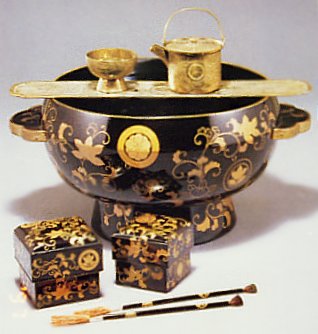
Necessary for blackening teeth
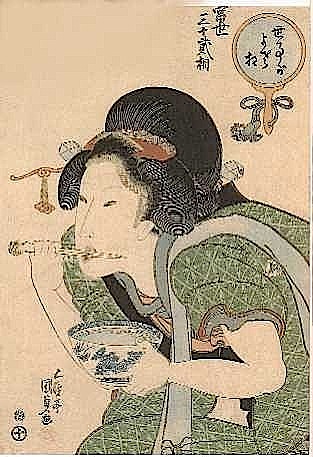
Trimming of teeth
The heroine of the tale “Lady who loved insects” perfects this eccentricity by displaying bushy (not plucked) eyebrows and natural teeth. “How horrible! exclaims one servant, her eyebrows look like hairy caterpillars and her teeth, like peeled caterpillars”. A captain who “was interested in the young lady changes his mind when he notices the thick black eyebrows that mark her face with an unpleasant boldness and above all at the sight of her unblackened teeth that shine in a horrible way when she laughs”. By association, the impudent – urticant – character of a finicky arcade exposes the carnassial character of a scraped denture.The ambiguous value of the act of baring teeth is shown for example by the mistrustful consideration of the letter “z”, which got rejected at the end of the alphabet by the Latins. It was said that when pronouncing it, teeth were bared in a grin (ringi: to bare teeth by growling) which reminded us of the dead. There obviously exists a rationalisation to it: the seventh letter of the Phoenician and the sixth of the Greek alphabet, the “z”, was borrowed from the Etruscans by the Latins: as it was not very significant phonologically speaking, it was abandoned and reappeared in the end of the alphabet with a borrowing from Greek terms).
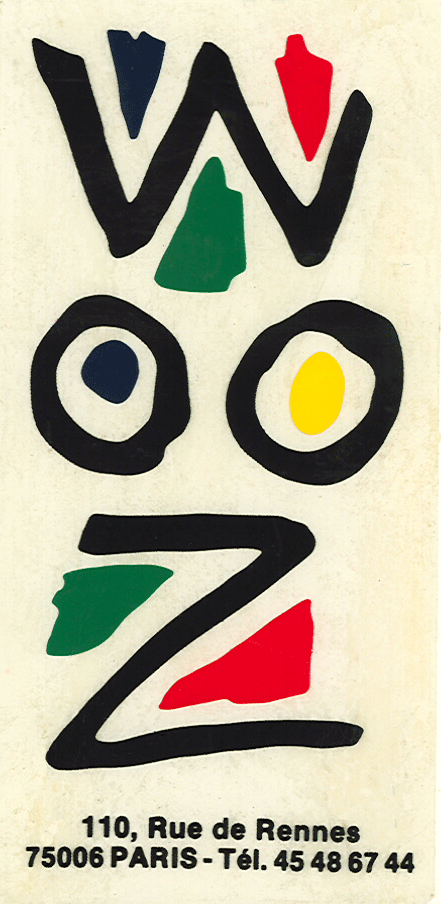
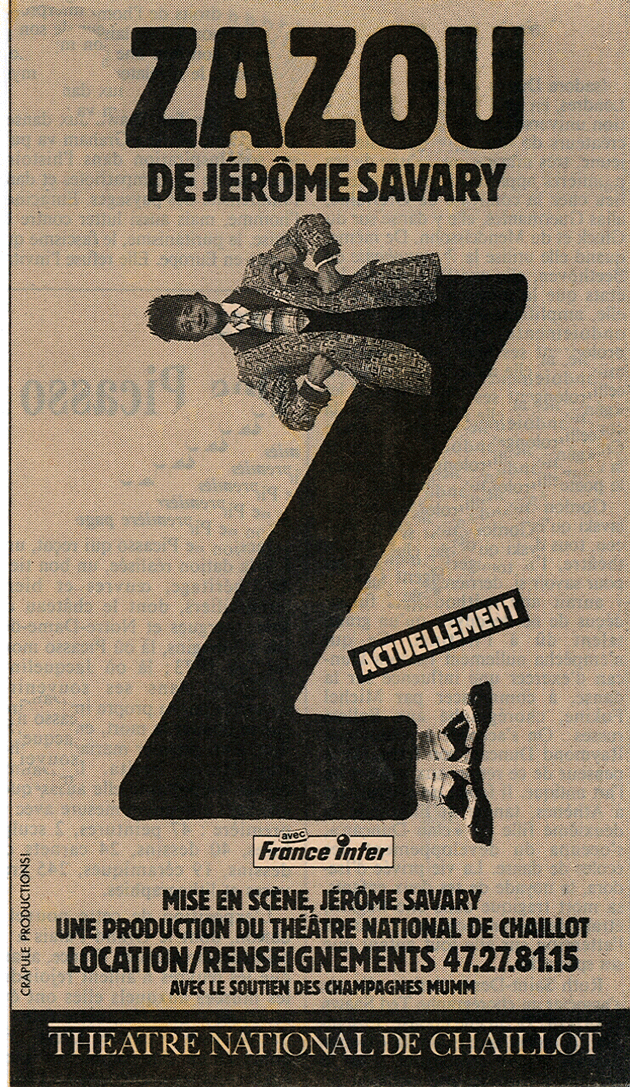
It is likely that some mutilations of lips and teeth can be understood in the continuity of gesture described here, as sometimes indicated by etiological accounts. They had the effect – at least symbolically: and it means it is an unmistakable sign – of restraining the fierceness or putting a lid on the aggressiveness which so naturally shows through laughter. The (canine) teeth of a young girl – or the bride - are filed in Bali and this makes her less likely to commit the six cardinal sins. During the operation, she has to keep her eyes open to prevent the bad spirits with sharp teeth from entering her; so she will be re-incarnated as a human being and not as a carnivorous animal.
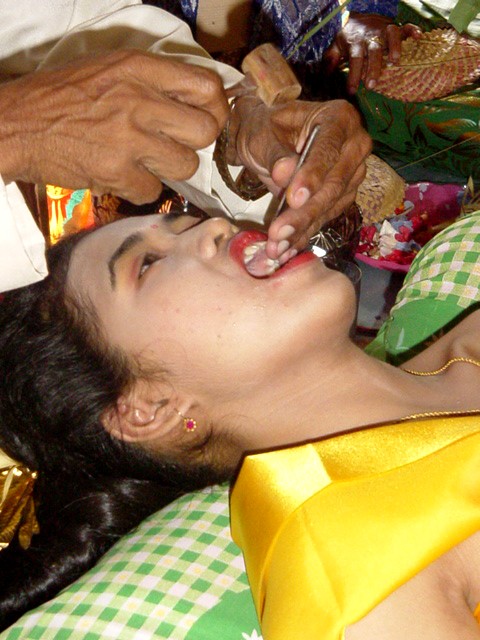
Séquence sur : http://www.baliauthentique.com
The traditional wedding costume of a Japanese bride that is always worn, consists of a headgear called “horn cover" (tsunokakushi) which also aims to protect the husband. (The following illustrations represent a wataboshi, a typical feature of the pre-Edo times, the third the tsunokakushi.)

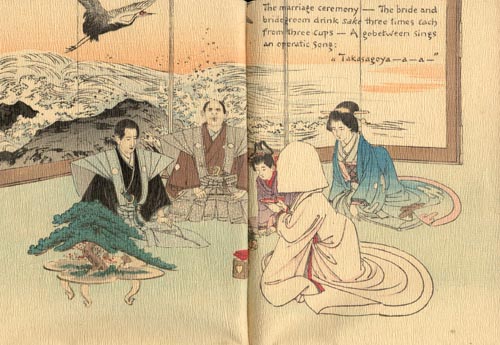
Hasegawa, T. (Publisher):
Japanese Pictures of Japanese Life, Tokyo (38 Yotsuya Hommura), T. Hasegawa, 1917
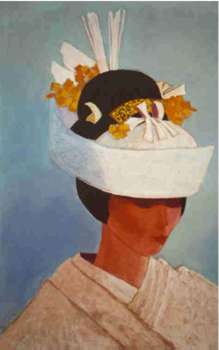
www.evelyndunphy.com/ htmpages/japan/Japan09.htm
Among the Nuer the extraction of the lower incisors – and sometimes the upper canines – has the aim of distinguishing man from the carnivorous animals (dog, leopard, crocodile – which are never eaten). And it would be a serious insult to say to a Nuer that he has many teeth.
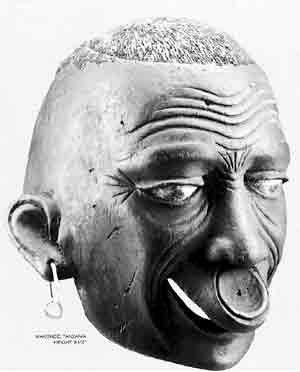
Woman with labrets
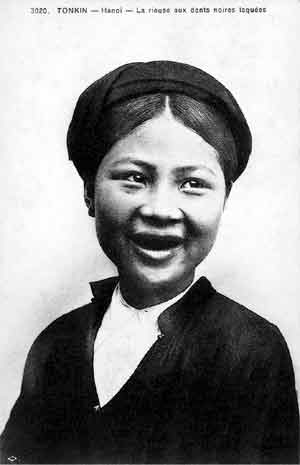
Laughing girl with blackened teeth (post card, private collection)

Amazonia : Waika Indien to whom someone had just remarked that he was “chatting up” the white woman
(Eibl-Eibesfeldt, 1976 :44).
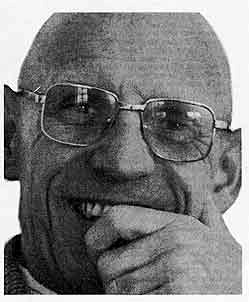
Rive gauche: A familiar gesture of a prominent philosopher which was qualified (Le Monde du 22 mars 1985)
as a “carnassial laughter”, if not a laughter of a “predator scout”.
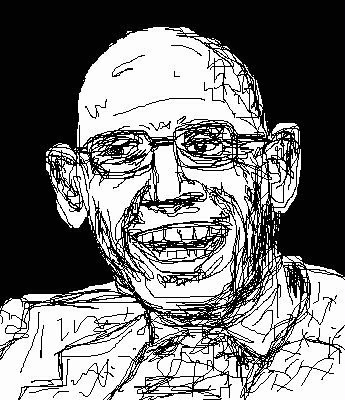
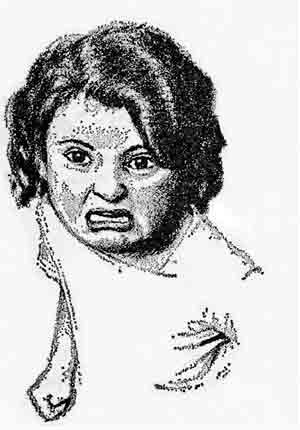
Fureur de petite fille.
(Eibl-Eibesfeldt , Forschung am Menschen, Stuttgart, 1963).

Fury in demonstration
Maria Callas, for the benefit of a Justice Official who had informed her about her convoke at the Chicago Opera in 1955
(Archives of the Metropolitan Opera)

Condeleezza Rice et la Corée du Nord
(AP / K.Wrigglesworth).
“I sometimes suffer from a feeling of malaise” notes the Japanese writer Junichiro Tanizaki, “when I look at photographs of Hollywood stars. All of them display smiles that show off their pearly white, perfectly aligned teeth. If we observe these faces more attentively, these dazzling smiles appear to be completely artificial. We can see that these people deliberately make an effort to open their lips to show their teeth. Over here, angry children manifest their aggression by going “hi hi” and by showing their teeth. In my opinion, Hollywood stars do the same thing. When we have made this statement we can no longer remain unaware of the aggressiveness of smiles like these [...] In Japan, it is tradition to find dental irregularities charming. An asymmetrical tooth appears to us to be something charming (kawai). On the other hand, we esteem that having regular teeth shows that one has quite a cold character, even a cruel one (zan-nin). Beautiful women in large towns have irregular teeth. The women in Kyoto are reputed and prized in this way for their irregular teeth. If showing ones teeth is a way of displaying ones social status – it is in the US that dental surgery achieves its perfection –
[

MouthPower Online © 2004 University of Maryland Baltimore.
The Dr. Samuel D. Harris National Museum of Dentistry.
www.mouthpower.org
]
then actors affirm their superiority by showing their teeth. If this hypothesis is not devoid of sense I should put myself at the very bottom of the scale.” (Inei Raisan, 1975: 62-63)

  
It used to be the latest fashion amongst mafiosos and boxers (and certain jazz stars) to affix embedded diamonds onto ones teeth… The fashion for having a set of golden false teeth with golden teeth still has its followers. A rap star, famous also for his bad temper, notably regarding the fair sex (which has led him to many reprisals before the courts) flaunts with his golden front teeth, which led one of his accomplices to say that he had built a ‘mantrap in his gob.’

freedraw.free.fr/ divers7.htm

Saint Jerome (infra: painting of the Caravaggio, visible in Malta, in a room of St Johns Cathedral which gives the famous beheading of John the Baptist star billing) translator first of the Gospels then of the Old testament from its original Hebrew, got his teeth filed down, it is said, to help him to pronounce Hebrew better. It’s not exactly for reasons of linguistic loyalty that a candidate for the presidency of the French Republic, whose incisors were supposed to give away his appetite for power, also filed down his teeth, thus showing an alleged appetite for power [and... the truth of this indication.]
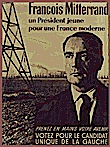

Cathédrale St. Jean, La Vallette, Malte
What do Saint Jerome and François Mitterrand have in common?
Answer: They have both filed down their teeth, although not exactly for the same reasons.
Japanese culture gives us, furthermore, a particular interpretation of the smileys or emoticons that embellish electronic mailing. In fact, the basic expression of contentment to the Westerner (which is obtained by typing “:” “-“ and “)”) is actually perceived in Japan as being a sign of impoliteness and even aggressiveness. Self-control and equanimity of expression correspond to a well-educated person, thus: (^_^). And it would be especially improper for a lady to post a smile that uncovers the teeth, (putting a hand over one’s mouth is observed recurrently in Japan). Furthermore, a young Japanese girls expressed her delight electronically in the following way: (^.^), don’t breathe a word! – as frolic as she is [such in her frolicking?]: “ frowning mischievously [?] to bear joyous sufferance"...

*
Neutralising sensitivity can produce euphoria. Anaesthetising vigilance (principle of reality) can possibly release laughter (principle of unreality). That anaesthesia, the chemical relaxing of vigilance, can provoke laughter, it shows the conscious in its function of adapting to reality under the law of the slightest pain, and laughter, when it is much sought after and exploited, as a temporary suspension of sensitivity. It allows man to protect himself from difference or magically flee from danger, as a paradoxical adaptation to reality: a way of accommodating oneself to the world which denies the value of reality, an endocrine paradise.
Endocrine paradises
We can note that the paths of artificial paradises are not in fact different from the paths of natural paradises. Be it sacred or profane drunkenness, material or emotional drunkenness, all bring neighbouring biochemical processes into play. (Mada, the Demon of Drunkenness – Mahâbhârata, III, 123 – has four manifestations: drink, women, dice and hunting. In Sanskrit, mada stands for intoxicating liquor, sexual excitement, serous fluid that oozes from the temples of an elephant on heat and pride personified.)
The aim of this cerebral analogy was brought to the fore in the 1960s when the observation was made that the molecules of a solution of morphine injected into a patient found their way and subsequently fixed themselves to a specific site on the brain, in other words, there were natural receptors suited to the treatment of this substance. If the brain “recognises” morphine it’s because morphine is familiar to it. But no vertebrate of natural substance, whose chemical composition is reminiscent of morphine, exists in the brain or in the body. Isolated in 1806, morphine, an active element of the opium extract of white Poppy was abundantly prescribed at the end of the 19th century and its effect on the brain had been well known since the laboratory synthesis of an antagonist compound (which inhibits its effects): naloxone, whose molecular structure is very close to the molecular structure of morphine. In 1975, an element having a similar effect was isolated in a pig’s brain. But this substance belongs to a chemical family that bears no resemblance to the family to which morphine belongs (morphine is an alkaloid, endorphins are peptides.) The answer to this paradox lies in molecular architecture. If morphine molecules adapt to the cerebral receptors which endorphins usually attach themselves to, its because their shape is akin to one another and, in the same way that a key can still turn in a lock in whatever metal we have made it from, they can induce identical effects to those of cerebral opioïdes mobilised by the organism during a situation of stress.
A same type of similarity exists between the main hallucinogens and different cerebral mediators. (Another kind of drug, unlike the substances mentioned here, act on the metabolism of neurotransmitters). For example, two plants given for the Aryan soma: éphédra and fly agaric (this last one with great likelihood).
Hazard’s noisy rattle but yet conscious of the necessity, pretence rolled around on the theatrum mundi at the same time as being an interpreter of the universe, having to adapt to an hostile and changing world, having learned the truth about its form and yet feeling under attack by its deformity, representing the optimal and the pessimal, indulging alternately in euphoria and in despair (and similarly excessive in its illusions and its disillusions), man has the ambiguous resource, among the methods that natural selection has put at his disposal, concurrently in parallel to the “artificial paradises” that empirical harvests revealed – we know what the main role of hallucinogenic plants in the archaeology of religions – the heady pathways of reflex knowledge that turn its back on the laws of knowledge. An endocrine pharmacy allows it to put up with adversity and sometimes to get the better of it.
Le rire commun, l'insensibilité visée, avec son régime d'euphorie, sanctionnant des valeurs partagées, opère une fusion sémantique qui réactive le groupe d'appartenance, un oubli (de soi) qui a vraisemblablement la sensibilité tactile – la cénesthésie – pour modèle. La fonction des zones gélogènes paraît assignée à la cohésion : elles révélent la vulnérabilité des fermetures individuelles, défauts dans la cuirasse de la contenance et jointures de la mise en corps à la fois. Le rire sémantique, subtil ou grossier, opérateur de cohésion – la manière la plus courte de se comprendre est le rire – puiserait ainsi, dans ses manifestations corporelles les plus spectaculaires, d'une irrésistible contagion, aux ressources phylogénétiques de l'association et de la grégarité.
FIN du chapitre 12
|
|

